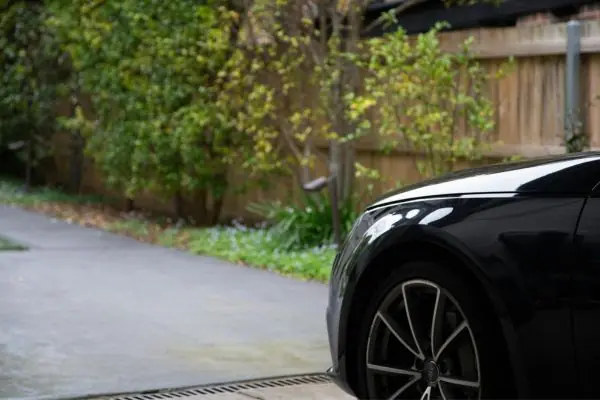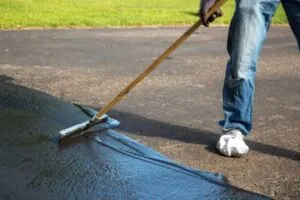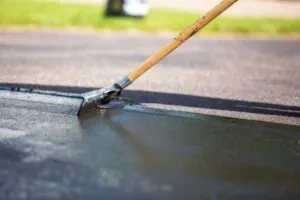Are cracked driveways and driveways starting to detract from your property’s curb appeal? Are you worried small cracks will lead to the breakdown of the asphalt in your driveway or parking area and cause bigger issues? Knowing how to effectively tackle sealing cracks in asphalt can make a significant difference. Whether you are a homeowner aiming to enhance your residence or a property manager responsible for maintaining commercial spaces, understanding the types of cracks, proper repair methods, and essential maintenance tips is crucial. This guide demystifies the process and empowers you to prolong your asphalt’s lifespan. Our goal is to help give you the tools and insights needed to ensure the safety and aesthetics of your asphalt and paved areas for years to come.
Types of Asphalt Cracks
Understanding the various types of asphalt cracks is essential for effective maintenance and repair. Each type requires specific approaches for sealing and repairing to prevent further damage and ensure longevity. Here is a quick overview of the common types of cracks we see:
Alligator Cracks
Alligator cracks resemble the texture of alligator skin and typically indicate serious structural issues. They often result from poor drainage, heavy loads, or insufficient base layers. Because they are often an indication of serious underlying issues, they should not be ignored. Immediate sealcoating and crack filling are crucial to prevent water infiltration, worsening the damage and destroying the rest of the asphalt base.
Block Cracks
Block cracks form interconnected rectangular patterns across the asphalt surface due to shrinkage from temperature fluctuations or improper mix composition and application. They are usually non-load-associated cracks that appear in a block pattern, often caused by incorrect asphalt mix design or rapid temperature changes. Sealcoating is essential to prevent moisture penetration, and crack filling restores surface integrity.
Longitudinal Cracks
Longitudinal cracks run parallel to the driveway’s centerline and can result from poor asphalt installation, thermal contraction, or structural fatigue. They are commonly caused by improper asphalt installation, thermal contraction, or structural fatigue. This structural-based issue is something to make note of, making it a common issue in asphalt driveways. Regular maintenance can prevent the issue from worsening.
Edge Cracks
Edge cracks form along the driveway’s edges and are typically caused by insufficient support or poor drainage. They can form along the edge of the driveway due to inadequate support or drainage. Effective sealcoating and crack filling are essential to prevent moisture intrusion and stabilize the driveway edges. Addressing these cracks promptly can prevent further damage and extend the lifespan of your asphalt surface.
Transverse Cracks
Transverse cracks run perpendicular to the driveway’s centerline and often stem from temperature fluctuations or reflective cracking from underlying layers. These cracks run perpendicular to the centerline of the driveway and are typically caused by thermal expansion and contraction or reflective cracking from underlying layers. Proper crack sealing is vital to prevent moisture infiltration and preserve driveway integrity.

Reflection Cracks
Reflection cracks occur when cracks from underlying layers reflect through new asphalt overlays, exacerbated by heavy traffic or temperature changes. They arise when cracks from underlying layers reappear in new asphalt overlays. Effective seal coating and crack filling during overlay installation mitigate these issues, preventing reflection cracks from compromising the integrity of the new surface.
Slippage Cracks
Slippage cracks appear as crescent-shaped cracks along the driveway surface, resulting from inadequate bond between layers or the presence of foreign materials during construction. These crescent-shaped cracks form due to poor bonding between layers or the presence of foreign materials during construction. Repair involves seal coating and cracks filling to maintain driveway cohesion and prevent water infiltration.
Shrinkage Cracks
Shrinkage cracks develop as a result of volume changes in the asphalt mix or low traffic volume, leading to surface cracking. Sometimes less asphalt is laid down than need and this can wear away faster over time. Other times weathering can reduce the volume of the asphalt in a particular area of the driveway. Regular sealcoating and crack filling are essential to prevent water infiltration and maintain driveway durability.

Related Post:Differences Between Asphalt Paving and Asphalt Sealcoating
Essential Maintenance Tips for Long-lasting Asphalt Driveways
Regular maintenance is key to preserving asphalt surfaces and avoiding costly repairs. By understanding proactive care strategies and adhering to recommended schedules, you can extend the lifespan of your driveway significantly.
Proactive Care for Asphalt
Proactive care starts with creating and sticking to a comprehensive maintenance plan. This plan should include regular inspections to identify issues like cracks early on. Timely repairs using methods such as crack sealing and sealcoating are essential to prevent minor issues from escalating into major repairs. By staying proactive, you not only enhance the aesthetics of your property but also ensure the long-term durability of your asphalt surfaces.
Recommended Maintenance Schedule
Adhering to a recommended maintenance schedule is key to maximizing the lifespan of your asphalt driveway. Annual crack filling is a fundamental practice that helps prevent water infiltration and further cracking. Sealcoating every three to five years provides an additional protective layer against UV rays, chemicals, and weather elements. This routine maintenance not only preserves the appearance of your driveway but also enhances its structural integrity, ultimately saving you from costly repairs and replacements.
Cost Comparison
Investing in routine crack repair through methods like crack sealing and sealcoating proves to be highly cost-effective compared to the expenses associated with extensive driveway replacements. You not only prolong their lifespan but also minimize long-term repair costs through this, as asphalt surfaces demonstrate resilience against environmental factors and heavy traffic, making them a sustainable choice for property owners looking to enhance both aesthetics and functionality.
You might like:Cost to Sealcoat a Driveway: A Comprehensive Guide
Conclusion
In conclusion, understanding the types, causes, and proper maintenance of asphalt cracks is essential for preserving the integrity and longevity of your driveway. By promptly addressing cracks through methods like sealcoating and crack filling, you not only enhance the appearance of your property but also prevent costly repairs in the future. Regular inspections and adherence to a maintenance schedule ensure that your asphalt remains resilient against environmental factors and heavy traffic.
With these strategies in place, you can enjoy a durable and aesthetically pleasing asphalt surface for years to come. If you need help with your local asphalt crack repair and driveway maintenance and sealing projects, give us a call. Donovan Sealcoating is ready to lend a helping hand!



